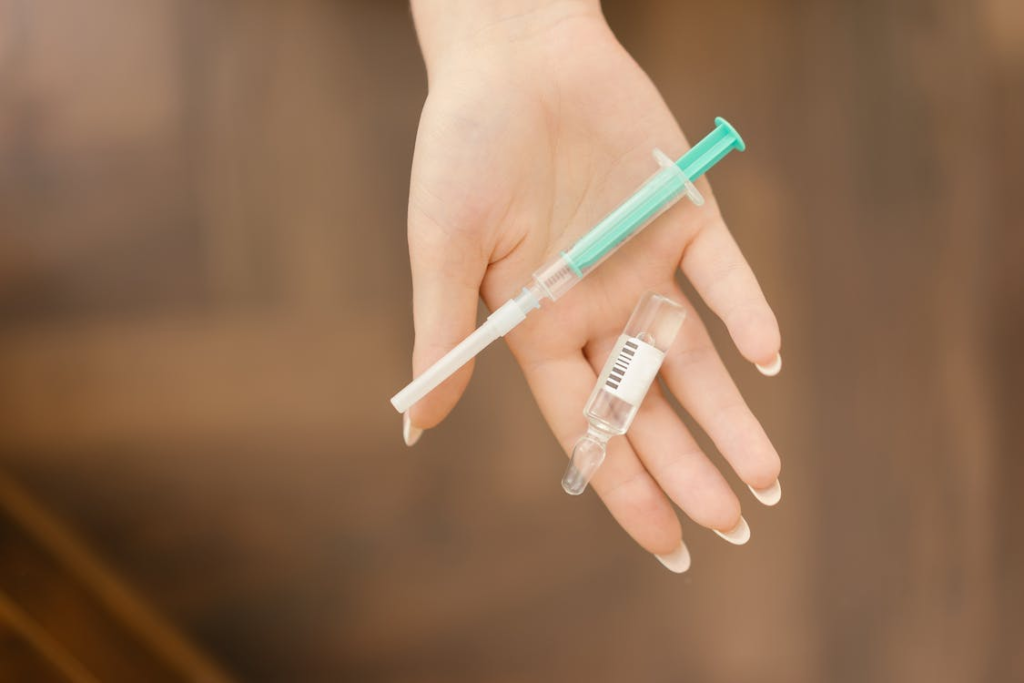Type 1 diabetes is a chronic condition that requires continuous management to maintain blood sugar levels within a healthy range. Insulin injections play a pivotal role in the treatment of type 1 diabetes, helping individuals lead fulfilling lives despite the challenges posed by the condition. In this blog, we will delve into the intricacies of type 1 diabetes and explore the crucial role that insulin injections play in managing the condition.
Contents
Understanding Type 1 Diabetes

Type 1 diabetes is a chronic autoimmune condition characterized by the body’s immune system attacking and destroying insulin-producing beta cells in the pancreas. Unlike type 2 diabetes, which is often associated with lifestyle factors and insulin resistance, type 1 diabetes is not preventable and typically emerges early in life. Here are key aspects to understand about type 1 diabetes:
1. Autoimmune Origin: In type 1 diabetes, the immune system mistakenly recognizes the insulin-producing beta cells in the pancreas as foreign invaders and attacks them. This autoimmune response results in a significant reduction or complete elimination of insulin production.
2. Insulin Deficiency: Insulin is a hormone crucial for regulating blood sugar levels. It facilitates the uptake of glucose by cells, providing energy. In the absence of sufficient insulin, glucose accumulates in the bloodstream, leading to hyperglycemia (high blood sugar).
3. Onset and Prevalence: Type 1 diabetes often manifests in childhood or adolescence, but it can occur at any age. The exact cause of the immune system’s attack on beta cells is not entirely understood, but both genetic and environmental factors are believed to contribute. It accounts for approximately 5-10% of all diabetes cases. Unlike type 2 diabetes, which is more prevalent and often associated with lifestyle factors, type 1 diabetes is less common.
The Role of Insulin in Type 1 Diabetes
Insulin, a hormone produced by the pancreas, plays a pivotal role in maintaining glucose homeostasis in the body. In individuals with type 1 diabetes, where the immune system attacks and destroys insulin-producing beta cells, external insulin becomes essential for survival. Here’s a breakdown of the fundamental role of insulin in type 1 diabetes:
Insulin Production:
- In type 1 diabetes, the immune system attacks and destroys insulin-producing beta cells in the pancreas.
- As a result, the pancreas produces little to no insulin, the hormone responsible for regulating blood sugar levels.
Blood Sugar Regulation:
- Insulin facilitates the uptake of glucose by cells, providing them with energy.
- Without sufficient insulin, glucose accumulates in the bloodstream, leading to hyperglycemia.
Energy Source:
- Insulin allows cells to absorb glucose, which serves as the primary energy source for bodily functions.
- Lack of insulin means cells are deprived of glucose, leading to fatigue and weakness.
Glucose Storage:
- Insulin promotes the storage of excess glucose in the liver as glycogen.
- In the absence of insulin, the liver releases stored glucose into the bloodstream, contributing to elevated blood sugar levels.
Protein and Fat Metabolism:
- Insulin regulates the metabolism of proteins and fats, ensuring a balance in the utilization of different energy sources.
- In its absence, the body may use proteins and fats for energy, leading to weight loss and ketone production.
Post-Meal Regulation:
- After meals, insulin helps cells absorb glucose, preventing post-meal spikes in blood sugar levels.
- Individuals with type 1 diabetes often need to administer insulin to manage these post-meal glucose increases.
Continuous Monitoring and Adjustments:
- Maintaining optimal blood sugar levels requires constant monitoring.
- Individuals with type 1 diabetes must regularly adjust their insulin doses based on factors like meals, physical activity, and stress.
Insulin Delivery Methods

Insulin delivery methods have evolved significantly over the years, providing individuals with diabetes greater flexibility and convenience in managing their blood sugar levels. Here’s an overview of the primary insulin delivery methods:
1. Syringes:
- Description: Traditional insulin syringes consist of a needle attached to a barrel, and users manually draw the required insulin dose from a vial.
- Advantages:
- Cost-effective.
- Widely available.
- Considerations:
- Requires manual drawing of insulin, which may be challenging for some users.
- Less discreet compared to other delivery methods.
2. Insulin Pens:
- Description: Insulin pens are pen-like devices pre-loaded with insulin cartridges. Users dial the desired dose and inject insulin through a disposable needle.
- Advantages:
- Convenient and easy to use.
- Precise dosing with adjustable settings.
- More discreet than syringes.
- Considerations:
- Cartridges must be replaced when empty.
- Users may need to carry multiple pens for different types of insulin.
3. Insulin Pumps:
- Description: Insulin pumps are small, battery-operated devices that deliver a continuous supply of insulin throughout the day. Users can also administer additional doses as needed.
- Advantages:
- Mimics the body’s natural insulin release more closely.
- Provides flexibility in insulin dosing.
- Reduces the need for multiple daily injections.
- Considerations:
- Requires wearing the pump consistently.
- Regular maintenance and site changes are necessary.
- Higher initial cost compared to other delivery methods.
4. Insulin Jet Injectors:
- Description: Jet injectors use a high-pressure stream of insulin to penetrate the skin, delivering the insulin without a needle.
- Advantages:
- Needle-free, reducing the fear of injections.
- Rapid insulin delivery.
- Considerations:
- May cause discomfort due to the force of insulin delivery.
- Less common than other methods.
5. Inhalable Insulin:
- Description: Inhalable insulin is administered through the lungs using a device similar to an inhaler.
- Advantages:
- Needle-free administration.
- Rapid absorption into the bloodstream.
- Considerations:
- Limited availability and specific requirements for use.
- Not suitable for all types of insulin.
6. Closed-Loop Systems (Artificial Pancreas):
- Description: Closed-loop systems integrate continuous glucose monitoring (CGM) with insulin pumps, automating insulin delivery based on real-time glucose levels.
- Advantages:
- Minimizes the need for manual adjustments.
- Aims for optimal blood sugar control.
- Considerations:
- Limited availability and higher cost.
- Requires ongoing monitoring and maintenance.
Type 1 Diabetes Insulin Injection Sites

Insulin injections for individuals with type 1 diabetes are typically administered into fatty tissue just beneath the skin. Proper selection and rotation of injection sites are crucial to ensure optimal insulin absorption and prevent complications. Here are common insulin injection sites for individuals with type 1 diabetes:
1. Abdomen:
- Location: The area around the belly button, avoiding a 2-inch radius.
- Advantages:
- Large surface area for injection.
- Rapid insulin absorption.
- Considerations:
- Rotate injection sites within the abdomen to prevent lipohypertrophy (fatty lumps).
2. Thighs:
- Location: The outer part of the thighs, about 4 inches above the knee.
- Advantages:
- Good absorption and is relatively painless.
- Convenient, especially for individuals who self-administer insulin.
- Considerations:
- Rotate between the left and right thigh.
3. Buttocks:
- Location: The upper, outer quadrant of the buttocks.
- Advantages:
- A less common but viable injection site.
- Suitable for individuals with leaner abdominal and thigh areas.
- Considerations:
- Injection may be more challenging for self-administration.
4. Upper Arms:
- Location: The back of the upper arms.
- Advantages:
- Offers an alternative site for rotation.
- Suitable for individuals with adequate fatty tissue.
- Considerations:
- May be less convenient for self-injection.
5. Considerations for Site Rotation:
- Prevent Lipohypertrophy: Regularly rotating injection sites help prevent the development of lipohypertrophy, a condition characterized by the accumulation of fatty deposits.
- Avoid Scar Tissue: Repeatedly using the same site can lead to the development of scar tissue, affecting insulin absorption.
- Optimize Absorption: Rotate sites within a specific region before moving to another area. For example, within the abdomen before moving to the thighs.
Monitoring and Adjusting Insulin Doses
Monitoring and adjusting insulin doses is a crucial aspect of managing type 1 diabetes effectively. This process involves regular blood sugar monitoring, interpreting the results, and making informed decisions about insulin administration. Here’s a comprehensive guide on monitoring and adjusting insulin doses:
1. Blood Sugar Monitoring:
- Frequency: Regular blood sugar monitoring is essential and may involve multiple checks throughout the day.
- Timing: Common times for monitoring include fasting (before meals), post-meals, and bedtime.
- Devices: Use blood glucose meters or continuous glucose monitoring (CGM) systems for accurate readings.
2. Interpreting Blood Sugar Readings:
- Target Ranges: Understand the target blood sugar ranges set by healthcare providers for different times of the day.
- Hypoglycemia: Identify symptoms of low blood sugar (hypoglycemia) and take prompt action if levels are too low.
- Hyperglycemia: Recognize symptoms of high blood sugar (hyperglycemia) and understand the potential causes.
3. Factors Affecting Blood Sugar Levels:
- Food and Carbohydrates: Be aware of the impact of different foods on blood sugar levels.
- Physical Activity: Exercise can affect insulin sensitivity and may require adjustments to doses.
- Stress and Illness: Emotional stress and illness can influence blood sugar levels, often necessitating adjustments.
Challenges and Considerations
Living with type 1 diabetes comes with a set of challenges that individuals navigate daily. From managing insulin injections to coping with the emotional aspects of the condition, here are some challenges and considerations faced by those with type 1 diabetes:
1. Fear of Needles:
- Challenge: Fear of injections can lead to anxiety and avoidance of insulin administration.
- Considerations: Healthcare providers can offer support and education to help individuals overcome needle-related fears. Alternative delivery methods, like insulin pens or pumps, may also be explored.
2. Injection Site Reactions:
- Challenge: Redness, swelling, or pain at injection sites can occur.
- Considerations: Proper rotation of injection sites and good injection techniques can minimize reactions. Seeking guidance from healthcare providers helps address concerns and ensure optimal insulin absorption.
3. Precision in Dosing:
- Challenge: Achieving precise insulin dosing is crucial for blood sugar control.
- Considerations: Regular blood sugar monitoring, education on insulin-to-carbohydrate ratios, and communication with healthcare providers help fine-tune insulin doses based on individual needs and lifestyle.
4. Lifestyle Adjustments:
- Challenge: Individuals with type 1 diabetes must adapt their lifestyle to accommodate insulin management, including meal planning, exercise considerations, and regular monitoring.
- Considerations: Diabetes education programs provide practical strategies for integrating diabetes management into daily life. Flexibility and a proactive approach contribute to successful adaptation.
5. Psychosocial Impact:
- Challenge: The emotional toll of managing a chronic condition can lead to stress, anxiety, and depression.
- Considerations: Psychosocial support, including counseling and peer support groups, can address emotional challenges. Encouraging open communication and involving family members can create a supportive environment.

